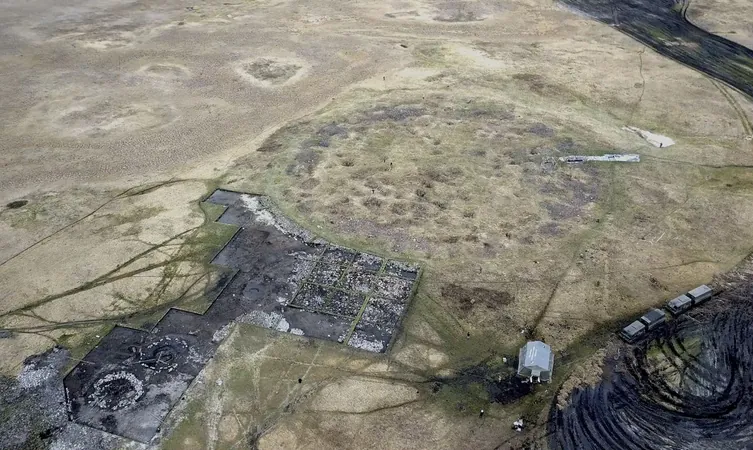
2,800-Year-Old Siberian Burial Mound Reveals Chilling Scythian Connections!
2024-10-07
Author: Jia
A Stunning Discovery
A stunning archaeological discovery in Siberia has unveiled a 2,800-year-old burial site that appears to hold connections to the mysterious Scythian culture. The burial, located in the Republic of Tuva, features the remains of a high-status individual interred with the chilling details of at least one sacrificial human and a staggering 18 horses. This monumental finding sheds light on burial practices during a pivotal period between the Bronze and Iron Ages.
Kurgan Excavation
The burial site, known as a kurgan, was excavated and revealed artifacts of horse-riding equipment and decor showcasing animals, clearly indicating a cultural affinity with the Scythians. These fierce horse riders, who roamed vast territories thousands of miles to the west, have long fascinated scholars due to their lack of written records, leaving their existence and practices steeped in mystery. The discovery of the horse skeletons with brass bits between their teeth adds a gruesome yet fascinating element to this intriguing narrative. Among the remains was also a woman believed to be a sacrificial victim, heightening the site's eerie appeal.
Historical Context
Herodotus, the ancient Greek historian, wrote about the Scythians' elaborate burial rituals, including the sacrifice of numerous horses and servants, to honor fallen kings. In one of the grisliest practices documented, horses were gutted and propped up alongside human sacrifices to create an otherworldly procession around the burial site. This discovery in Tuva significantly contributes to our understanding of how these ancient cultures may have shared and adapted their ceremonial practices.
The Origins of the Scythians
Past research and modern genetic studies suggest that the Scythians were a diverse group with Siberian, East Asian, and Eurasian roots. Yet, the full origin story of this captivating culture continues to elude researchers, with scholars like Gino Caspari, an archaeologist at the University of Bern, expressing that uncovering evidence of their beginnings has been a long-held dream.
Significance of the Findings
Archaeologists unearthed this remarkably intact kurgan in an area dubbed the "Siberian Valley of the Kings," home to thousands of similar burial mounds. Radiocarbon dating places this tomb in the late ninth century B.C., marking it as one of the earliest known examples displaying Scythian-style burial traditions. Could this discovery redefine what we know about the Scythians and their ancestors?
Future Excavations
As more excavations are planned in this region filled with ancient secrets, we anticipate further revelations that could unravel more of the Scythians' enigmatic past. Keep your eyes peeled for updates as the story unfolds!
 Brasil (PT)
Brasil (PT)
 Canada (EN)
Canada (EN)
 Chile (ES)
Chile (ES)
 España (ES)
España (ES)
 France (FR)
France (FR)
 Hong Kong (EN)
Hong Kong (EN)
 Italia (IT)
Italia (IT)
 日本 (JA)
日本 (JA)
 Magyarország (HU)
Magyarország (HU)
 Norge (NO)
Norge (NO)
 Polska (PL)
Polska (PL)
 Schweiz (DE)
Schweiz (DE)
 Singapore (EN)
Singapore (EN)
 Sverige (SV)
Sverige (SV)
 Suomi (FI)
Suomi (FI)
 Türkiye (TR)
Türkiye (TR)